The drip irrigation system operating pressure and the system flow rate are two things you must know to choose the right sprinkler pump. Anyone who tells you what pump you need without first determining your required flow (GPM or l/m) and pressure (PSI or bars) is simply guessing. Let's start by avoiding some of the most common beginner blunders. When it comes to irrigation pumps, there are three common mistakes that people make. All of these are extremely costly mistakes to correct. Do not purchase a pump until you have determined your exact water flow and pressure requirements! Every year, many people lose a lot of money because they buy a pump before designing their irrigation system, only to find out later that it isn't the right type or size. A pump must be sized to meet your irrigation system's exact pressure and flow requirements. "How much horsepower do I require?" is a question asked by far too many people. Pumps aren't chosen based on their horsepower. A pump that produces the proper amounts and ratios of water flow and pressure is required. It may appear obvious, but our experience suggests that it isn't.  So first figure out how much water you'll need, then buy the pump! The performance labels on many off-the-shelf pumps are deceiving. They aren't lying to you, but they aren't being completely honest with you). The pump's ability to build pressure decreases as your demand for flow rises. In the same way, as you demand more pressure, your flow rate decreases. Drip emitter drip irrigation systems are the second type of drip irrigation system. Drip emitters, like drip tape, require low pressure and always drastically reduce flow. It is not recommended to use a pump to provide water to drip emitters unless you are using hundreds of them at once. Instead, we recommend using zero-pressure emitters, such as Flag Emitters, where the pressure created by gravity on an above-ground tank is enough to keep the emitters hydrated. Drip tubing is the third and final type of drip irrigation system. Drip tubing is circular, with drip emitters spaced every 8 to 24 inches. Drip tubing, unlike drip tape, can work under pressure, up to 50-60 PSI in most cases. Drip tubing is compatible with our cistern pumps, but you should refer to the pump's performance curve to determine how much flow you should have in your irrigation system at a given pressure. For example, if you want to run the Grundfos SBA pump at 50 PSI, make sure your irrigation system is zoned so that each zone operates at 8 GPM.
So first figure out how much water you'll need, then buy the pump! The performance labels on many off-the-shelf pumps are deceiving. They aren't lying to you, but they aren't being completely honest with you). The pump's ability to build pressure decreases as your demand for flow rises. In the same way, as you demand more pressure, your flow rate decreases. Drip emitter drip irrigation systems are the second type of drip irrigation system. Drip emitters, like drip tape, require low pressure and always drastically reduce flow. It is not recommended to use a pump to provide water to drip emitters unless you are using hundreds of them at once. Instead, we recommend using zero-pressure emitters, such as Flag Emitters, where the pressure created by gravity on an above-ground tank is enough to keep the emitters hydrated. Drip tubing is the third and final type of drip irrigation system. Drip tubing is circular, with drip emitters spaced every 8 to 24 inches. Drip tubing, unlike drip tape, can work under pressure, up to 50-60 PSI in most cases. Drip tubing is compatible with our cistern pumps, but you should refer to the pump's performance curve to determine how much flow you should have in your irrigation system at a given pressure. For example, if you want to run the Grundfos SBA pump at 50 PSI, make sure your irrigation system is zoned so that each zone operates at 8 GPM. 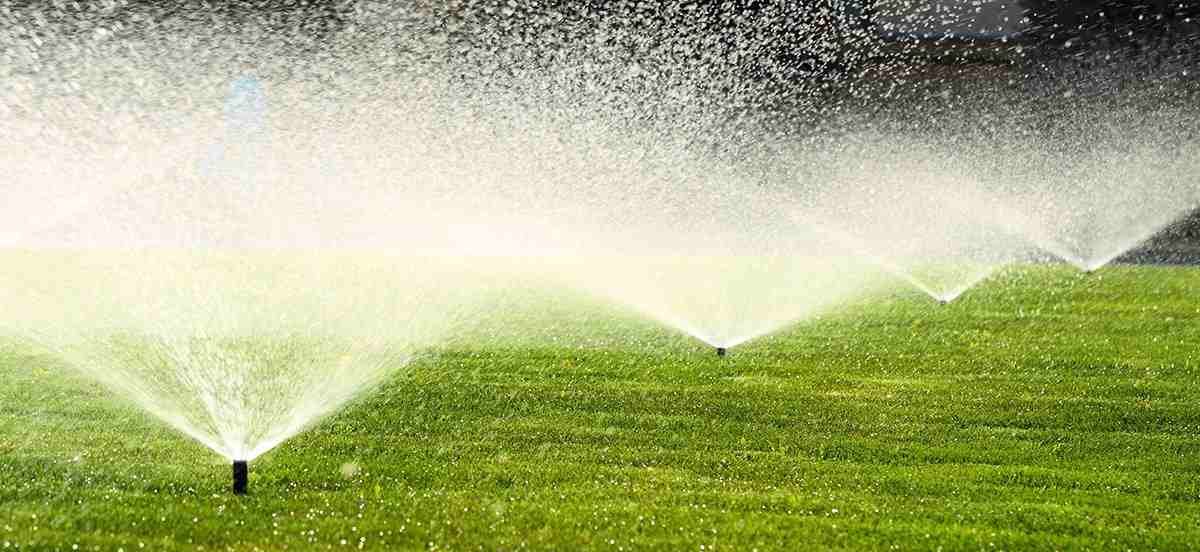
Drip irrigation pump
Irrigation and water features use centrifugal pumps the most. A centrifugal pump uses an impeller to move or push water. If you're not sure what type of pump you'll need, speaking with a pump expert is probably the best way to find one that'll work for you. One of our most asked questions is, "Can I use the cistern pumps with the drip irrigation system?" Because drip irrigation is a complicated topic, The answer to this question can be difficult due to the complexity of drip irrigation. The "drip irrigation" category includes three different types of irrigation systems, so we need to know which one is being used to answer this question. The first is drip tape, which is a cheap (and usually disposable) flat plastic tape designed to work at a maximum pressure of 10 PSI. When running drip tape, a 10 PSI pressure regulator is frequently required, or the entire irrigation system risks blowing apart. Low pressure is defined as 10 PSI. In fact, it is significantly less than the majority of pumps can handle. A pump's operating range, also known as a pump performance curve, is associated with it. It's a curve because the performance of a pump is directly proportional to the flow (measured in gallons per minute) and pressure (measured in pounds per square inch. 
Drip irrigation pump selection
Every irrigation system needs a water source and distribution system. To break it down you need a pump with a water basin, tubing, connectors, drippers, and a selection of control systems. Before you can choose a pump that will meet your needs, you must first understand four things: 1) the total head or pressure against which it must operate 2) the desired result, the desired flow rate, 3) the suction lift, and 4) the fluid characteristics. The pump discharge rate and discharge pressure are both factors in determining a pump's capacity. Gallons per minute (GPM) in English units or liters per second (LPs) in metric units are the most common units for measuring discharge rate. In English units, pressure is measured in pounds per square inch (psi), while in metric units, it is measured in kilopascals (kPa). To determine how the pumping system will function as part of an irrigation system, it is necessary to measure both discharge rate and pressure under normal operating conditions. The required pump duty will be specified in the irrigation system design (flow rate and pressure head). The pump with the best operating point (BOP) at this flow rate and pressure head, as well as the ability to operate at the available suction head, is the best choice. 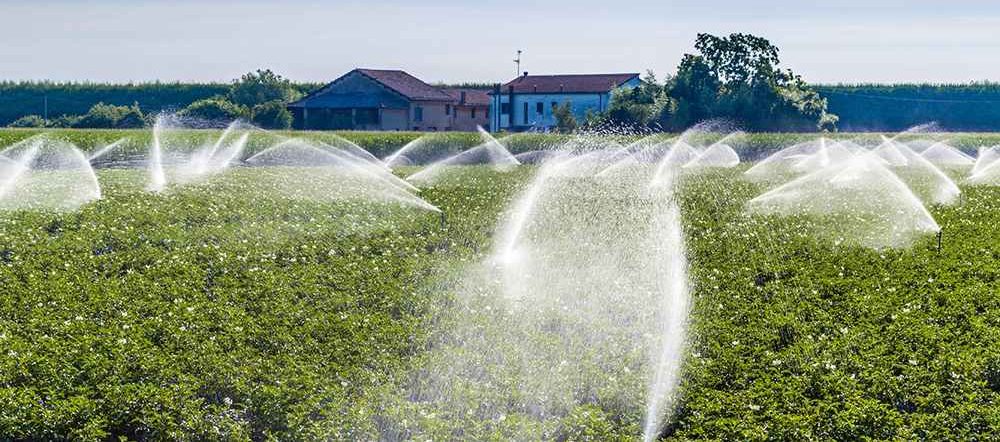
How to install drip irrigation to sprinkler system
Horizontal centrifugal pumps are the best common for sprinkler irrigation. They generally offer lower cost, require less maintenance, and are easier to install and how to inspect for maintenance than other types. Pump operating constraints may have an impact on water supply and must be considered when planning.
- Energy restrictions prevent pumps from operating at certain times of the day.
- Financial constraints that prevent the pump from being used at certain times due to prohibitively high electricity costs (days of the week or hours during the day).
- Time constraints due to resource sharing among growers, the water source may be unavailable at certain times or days of the week. We select the pump for irrigation systems based on its flow and pressure efficiency. As a result, the designer's first step is to figure out how much flow and pressure are required. In fact, the entire system's relationship between flow and load must first be established. The irrigation system's total load is separated into two parts:
- Fixed Load
- Variable load
The difference between the fixed level of water inside the source or well and the point where water comes out of the dripper or pipe is the variable load of the system, which has nothing to do with the amount of flow. However, the system's variable load is a function of the flow rate and is made up of the drop in water level (if it's a well), the decrease in friction in pipes and fittings, and the pressure at the water outlet, and the velocity load. The total dynamic load, which is denoted by the symbol TDH, is the sum of the system's constant and variable loads. 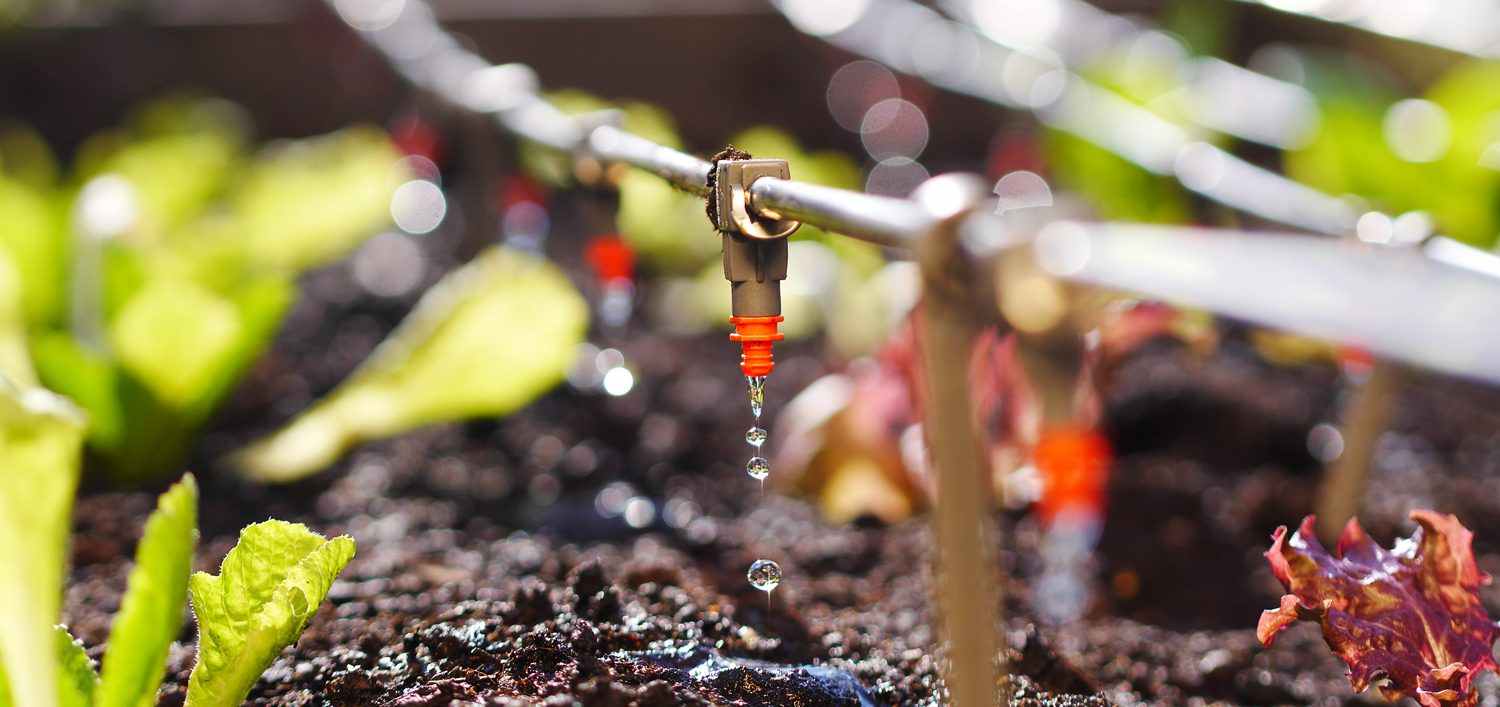
Best drip irrigation pump
The pumping system must be precisely matched to the irrigation distribution system for the best and proper irrigation drip system design. The pumping system can then efficiently provide the required pressure and flow rate. When an irrigation system is designed or modified to use an existing pumping system, the capacity of the existing pump must be measured. Only by accurately measuring the pump's flow rate and pressure can the irrigation system be properly designed. When an irrigation system is designed or modified to use an existing pumping system, the capacity of the existing pump must be measured. Only by accurately measuring the flow rate and pressure of the pump can the irrigation system be properly designed. Visual estimation of pump capacity or reliance on manufacturer's specifications to determine current pump capacity are insufficient. Visual estimates are rarely accurate, and manufacturer specifications do not account for site-specific factors like well characteristics or suction and discharge pipe sizes. The effects of age and wear on pumping system performance are also not included in the manufacturer's specifications. 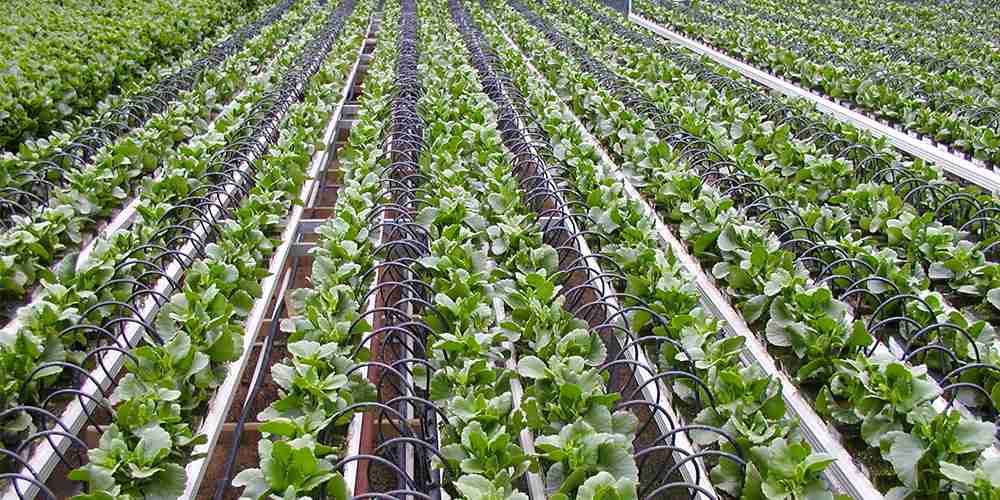
Drip irrigation pump enclosures
A drip irrigation system necessitates the use of a variety of enclosures and tools. As a result, many people may be perplexed when gathering supplies. Don't be concerned if you don't know which drip irrigation equipment, you'll need to set up an irrigation system. We'll go over each of the accessories that you'll need to set up a drip irrigation system in this article. We also tried to write this article in such a way that it could be applied to anything from a small backyard garden to a large orchard. To set up a drip irrigation system, you'll need a variety of tools. For a small backyard home irrigation system or a large garden, the equipment may be slightly different. To circulate water in pipes and supply water to all parts of the earth, every irrigation system requires a driving force. These driving forces are provided by the pumps. Consider the dimensions of the ground, the material and diameter of the pipes, the number of irrigation drippers, and the slope of the ground when choosing the right pump. As the final component of the irrigation system, the drippers deliver water to the plant's roots. However, keep in mind that drippers typically require at least 1 pressure to function properly. 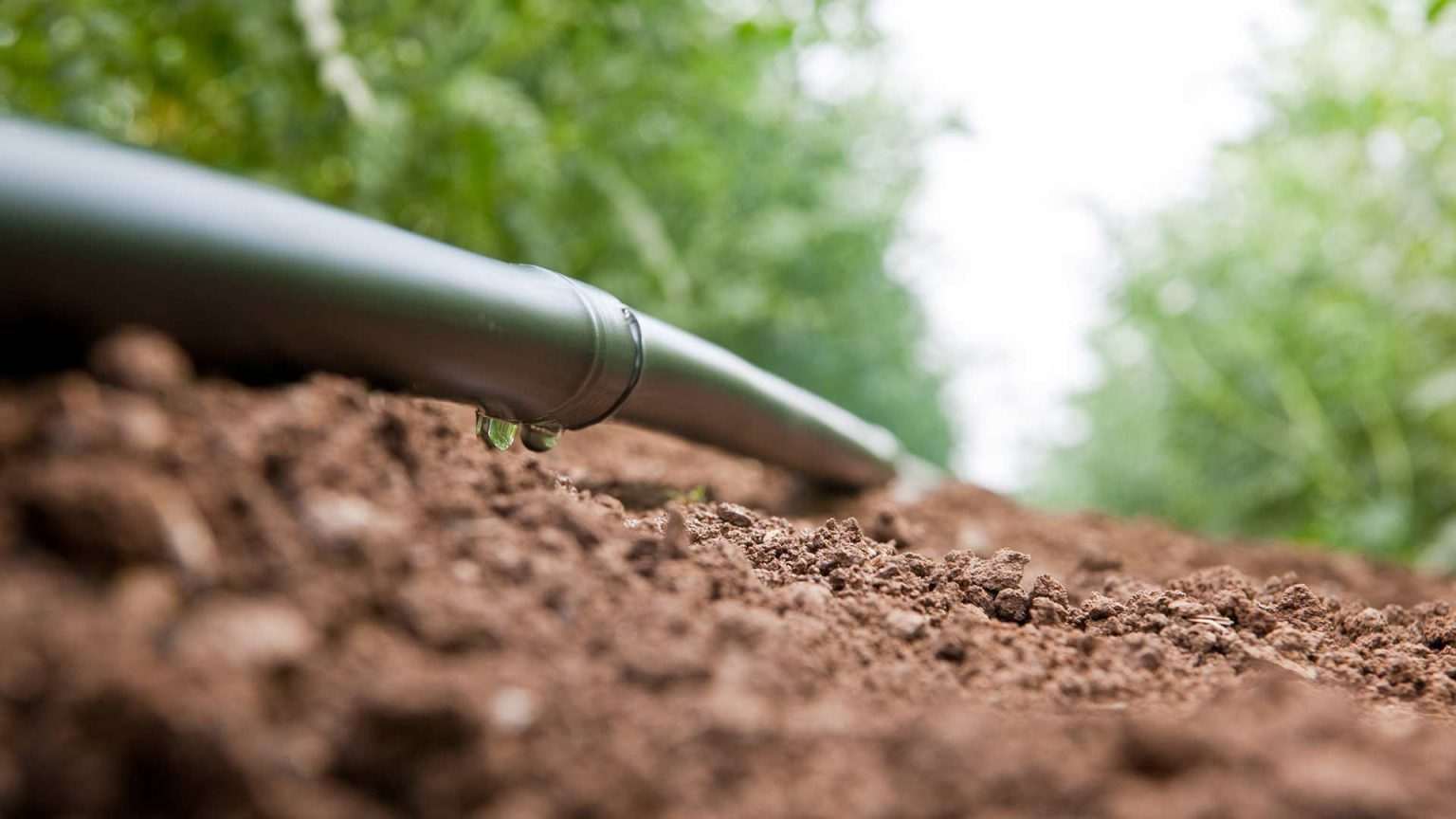
Drip feed irrigation pump
It is necessary to measure the capacity of the feed of the pump when designing or modifying an irrigation system to use an existing pumping system. Only when the flow rate and pressure of the pump are precisely measured can the irrigation system be properly designed. Visual estimation of pump capacity or relying on manufacturer's specifications to determine current pump capacity are both insufficient. Visual estimates are rarely accurate, and manufacturer's specifications do not account for site-specific factors like well characteristics or suction and discharge pipe sizes. The effects of age and wear on pumping system performance are also not covered by the manufacturer's specifications. Aqueducts, wells, and rivers are the most common water sources in agriculture, but they rarely have enough potential energy to supply the pressure required by drippers. As a result, to increase water energy, a pump should be used. The selection of the pump and the design of the pumping station for irrigation are influenced by several factors.  The power of a pump, for example, is determined by the depth of the water to be drawn, the height of the farm or garden in relation to the pump, the pumping flow, and the connections and control valves used in the piping network. Alternatively, what is the required dripper pressure? All of these or other issues should be considered when designing the pumping station. Pumps of any type can be used in an irrigation system. Agriculture is a fundamental occupation in any country, and it has a direct impact on economic growth.
The power of a pump, for example, is determined by the depth of the water to be drawn, the height of the farm or garden in relation to the pump, the pumping flow, and the connections and control valves used in the piping network. Alternatively, what is the required dripper pressure? All of these or other issues should be considered when designing the pumping station. Pumps of any type can be used in an irrigation system. Agriculture is a fundamental occupation in any country, and it has a direct impact on economic growth.
Do you need a pump for drip irrigation
The parameters you need to maintain the crop's health and the integrity of the drip irrigation system are related to the quality of irrigation water. To avoid clogging of the irrigation components and enable orderly long-term irrigation according to the irrigation program, every type of pressurized irrigation system requires attention to the water quality. Due to the small area, no pump is required to irrigate home gardens, pots, yards, terraces, or balconies. As a result, you can use the city tap at home for drip irrigation. Water pressure in the city is usually between 2 and 4 times what you need to irrigate your lawn. If the garden or yard you're irrigating is larger than usual, divide it into two or more sections and irrigate each one separately. 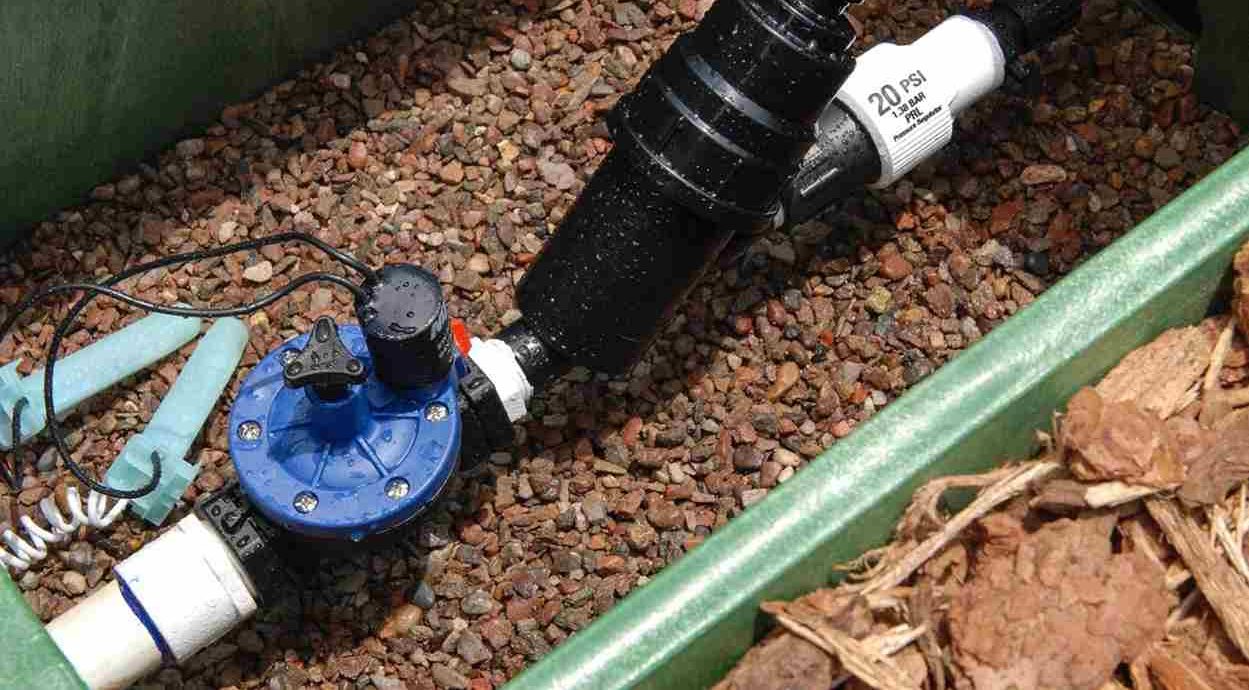 This will reduce the overall cost of setting up your irrigation system by eliminating the cost of preparing and installing the pump. You can use the earth's gravity to drive water through pipes if the ground has a steep slope or your water source is at a high elevation. For this purpose, it's useful to know that a difference of 10 meters in height can affect your pressure by up to 1 bar.
This will reduce the overall cost of setting up your irrigation system by eliminating the cost of preparing and installing the pump. You can use the earth's gravity to drive water through pipes if the ground has a steep slope or your water source is at a high elevation. For this purpose, it's useful to know that a difference of 10 meters in height can affect your pressure by up to 1 bar.
Drip irrigation pump manual
In drip irrigation systems, there are four different types of manual control valves for pumps:
- Valve with a ball
A quarter-turn valve is a ball valve. The closing mechanism of a ball valve is a sphere (ball) with a port in the middle, connected to a lever in line with it that indicates the valve's position. Rotating the lever causes the ball to turn, allowing flow when the port is parallel to the pipe and blocking flow when the port is perpendicular to the pipe. It is not suitable for regulating the flow because it is designed to be fully opened or closed.
- Butterfly valve
A quarter-turn valve is a butterfly valve. It works in a similar way to a ball valve. The pipe's closing mechanism is a disc that sits in the middle of the pipe. 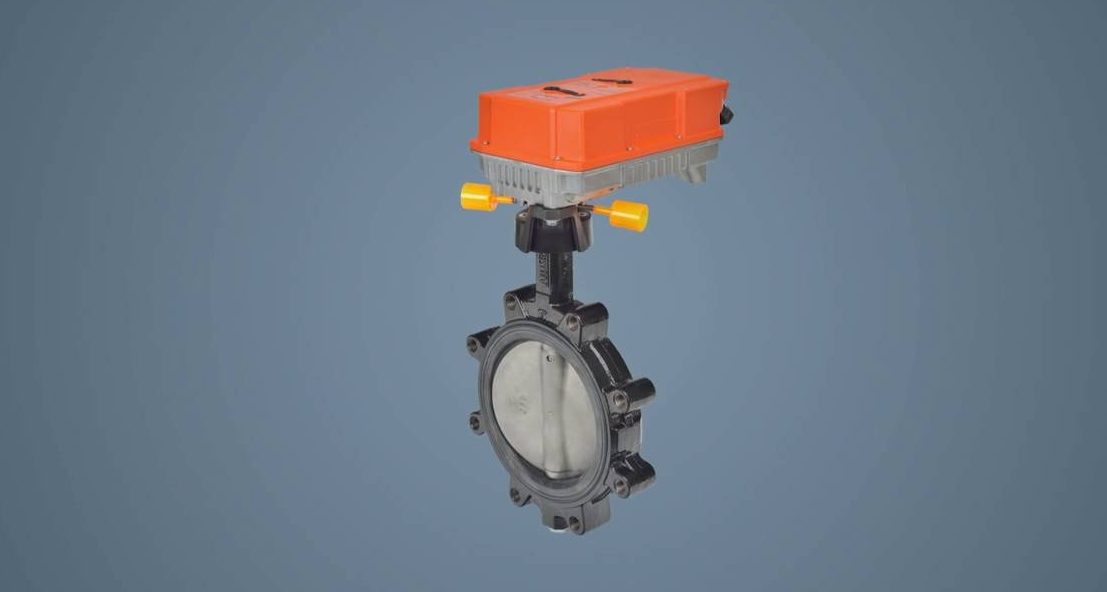 The disc is cut through the middle by a rod connected to the lever. The disc is turned parallel or perpendicular to the flow by rotating the lever. Unlike a ball valve, the disc is always present within the flow; thus, regardless of valve position, a slight pressure drop is always induced in the flow. It is not suitable for regulating the flow because it is designed to be fully opened or closed.
The disc is cut through the middle by a rod connected to the lever. The disc is turned parallel or perpendicular to the flow by rotating the lever. Unlike a ball valve, the disc is always present within the flow; thus, regardless of valve position, a slight pressure drop is always induced in the flow. It is not suitable for regulating the flow because it is designed to be fully opened or closed.
- Gate valve
The gate (sluice) valve opens by removing a gate (wedge) from the fluid's path. There is no obstruction in the flow path when the gate valve is fully open, resulting in very low friction loss. It is not suitable for regulating the flow because it is designed to be fully opened or closed.
- Globe valve
The only type of manual valve recommended for regulating flow with minimal friction loss is a globe valve. It is made up of a movable disc plug that is aligned with a fixed ring in the stream. The screw action is controlled by a handwheel. 
Drip irrigation pump method
Agriculture and farm irrigation are among the professions that require a method for water supply and irrigation pressure. The length of the path, the source of the water, the size and type of pipe, the number of nozzles, the number of ridges, and the number of valves all play a role in selecting the right water pump for drip irrigation. Drip irrigation is a type of irrigation system that conserves water while also supplying water and nutrients to the soil. The goal of this type of irrigation is to deliver water directly to the roots, which is accomplished with the help of tools like special pipes. Other irrigation methods are inherently less efficient than these systems. After boosting the pressure, these pumps are usually connected to the main water pipe and send the water to the outlet section with holes. Where the capsule will be installed, dig a hole 35 to 40 cm deep and about 10 cm wide. Fill the irrigation capsule with perlite and place it in the hole. Fill the cavity around the inside of the capsule with pea sand to ensure that water reaches all the plant's roots in a consistent and regular manner. Following this, the drip tube dropper is attached to the capsule nozzle, and the capsule cap is placed to irrigate. The use of pea sand in the capsule installation prevents the plant roots from moving to the capsule holes and causing the product to become stuck. 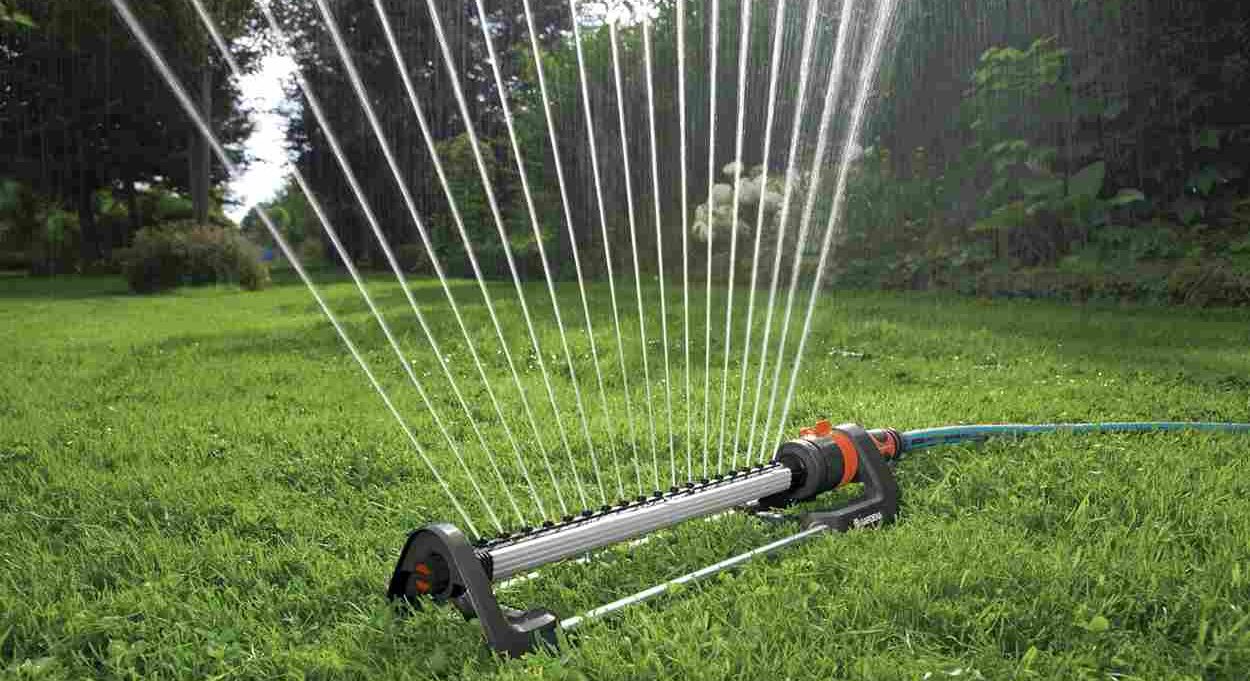 Farmers are frequently asked what type of agricultural water pump to use when shopping. If you're looking for the most powerful agricultural water pump, a diesel water pump is the way to go. Many farmers do not have access to electricity today, but this is becoming less of a problem. In the past, all farmers used diesel agricultural water pumps in general. Electric agricultural water pumps seemed more logical and cost-effective until science progressed. This type of pump is very popular because it is very environmentally friendly. Electric pumps, on the other hand, have less power and capacity, making them unsuitable for locations without electricity. To choose the right pump motor, you must first consider the fuel you have available. Some people consider the cost of gasoline in addition to its availability. Pump motors powered by gasoline, oil, or diesel are used in places where there is no municipal or industrial electricity. The number of heads and discharge is obviously limited due to the pump motor's limited power. In rural and remote areas, gasoline and diesel engines are widely used, and pump motors have become more common in recent years due to lower energy production costs.
Farmers are frequently asked what type of agricultural water pump to use when shopping. If you're looking for the most powerful agricultural water pump, a diesel water pump is the way to go. Many farmers do not have access to electricity today, but this is becoming less of a problem. In the past, all farmers used diesel agricultural water pumps in general. Electric agricultural water pumps seemed more logical and cost-effective until science progressed. This type of pump is very popular because it is very environmentally friendly. Electric pumps, on the other hand, have less power and capacity, making them unsuitable for locations without electricity. To choose the right pump motor, you must first consider the fuel you have available. Some people consider the cost of gasoline in addition to its availability. Pump motors powered by gasoline, oil, or diesel are used in places where there is no municipal or industrial electricity. The number of heads and discharge is obviously limited due to the pump motor's limited power. In rural and remote areas, gasoline and diesel engines are widely used, and pump motors have become more common in recent years due to lower energy production costs.  The pump motor, in fact, is a device that transforms fossil energy into electrical and then mechanical energy. A pumping engine is a combination of a fuel engine and a pump. Pump selection and operation follow the same principles. The right size and design of the pump, as well as proper maintenance, are essential for cost-effective performance. On-farm irrigation pumping accounts for 70 to 80 percent of a farm's total electricity consumption, according to the Agricultural Resources Management (ARM). Today, most farmers are working with diesel pumps. Part of the reason for this is that many diesel engines that were installed years ago are still in good working order today. Diesel pumps can be a very expensive option today due to high prices and fuel fluctuations. Maintenance costs, which include the installation of controls, are also higher than for electric pumps. It's worth noting, however, that electricity isn't always available on farms.
The pump motor, in fact, is a device that transforms fossil energy into electrical and then mechanical energy. A pumping engine is a combination of a fuel engine and a pump. Pump selection and operation follow the same principles. The right size and design of the pump, as well as proper maintenance, are essential for cost-effective performance. On-farm irrigation pumping accounts for 70 to 80 percent of a farm's total electricity consumption, according to the Agricultural Resources Management (ARM). Today, most farmers are working with diesel pumps. Part of the reason for this is that many diesel engines that were installed years ago are still in good working order today. Diesel pumps can be a very expensive option today due to high prices and fuel fluctuations. Maintenance costs, which include the installation of controls, are also higher than for electric pumps. It's worth noting, however, that electricity isn't always available on farms.
Drip irrigation pump noise
One of the most important factors to consider when selecting and purchasing a drip irrigation water pump for use in the garden is whether the pump's noise, as this will not disturb the neighbors. Of course, there is no such thing as a silent pump, but by selecting a low-noise home pump, one can ensure that the pump's volume is not so high that it disturbs people's comfort. 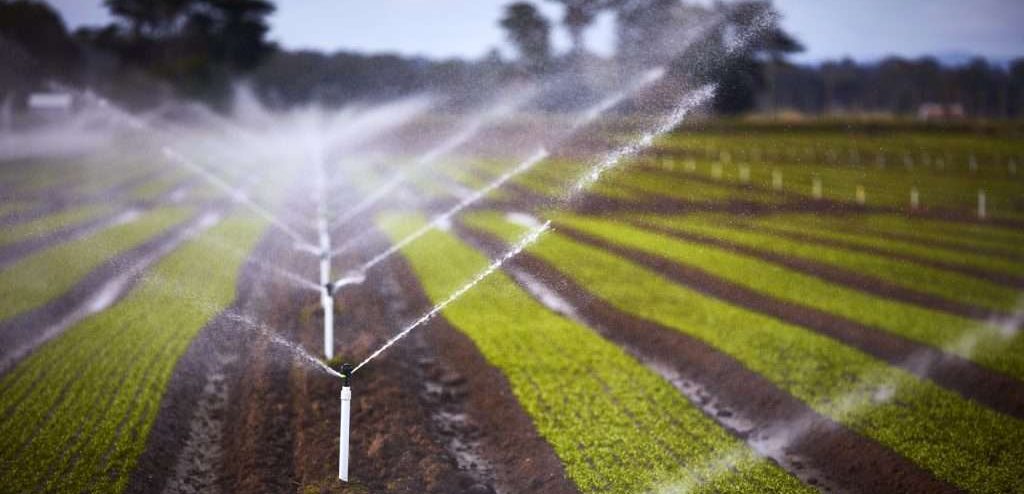 However, the sound of the water pump may be so loud and unusual for some reason that it is necessary to take action to resolve the issue. In this section, we'll look at the different types of noises that can come from the water pump; however, some of these noises are normal and do not need to be removed. The other group of sounds, on the other hand, is completely abnormal and, in fact, indicates a problem with the water pump system that must be addressed right away:
However, the sound of the water pump may be so loud and unusual for some reason that it is necessary to take action to resolve the issue. In this section, we'll look at the different types of noises that can come from the water pump; however, some of these noises are normal and do not need to be removed. The other group of sounds, on the other hand, is completely abnormal and, in fact, indicates a problem with the water pump system that must be addressed right away:
- The knocking sound of a water pump
The knocking sound of a water pump is caused by rams striking water within the pump system, and it is one of the pump's natural sounds. The main cause is a sudden change in water pressure and the release of a large amount of energy in the pump. As a result, by adjusting the pressure of the domestic water pump, some of the ram blows, and the water pump's knocking sound can be eliminated.
- The clicking sound of a water pump
The clicking sound heard when the water pump is turned on and off is the sound made by the automatic switch. This sound is normal for the pump, but if it is replaced by a buzzing sound from the pump's automatic switch, it indicates a problem that needs to be investigated further. There are different types of sounds that we may explain about them later. 
Drip irrigation pump quality
Drip irrigation is a type of local or micro-irrigation in which water is pumped at low pressure to the roots of plants through a dropper or orifice. Water is slowly poured at the plant's foot in this method, which saves water and improves irrigation quality. Additionally, because this method only wets a small area and depth from the soil surface, the rate of water evaporation is reduced. Water flows through a network of valves, pipes, and drippers in a drip irrigation system. A drip irrigation system can be more efficient than other types of irrigation methods such as surface and sprinkler irrigation, depending on the design quality of the installed system. Some droppers look like spaghetti tubes and have multiple outlets. This is done to increase the wetting surface while keeping the cost down. The sub-tube and dripper are combined into a detachable unit for less permanent row plants such as tomatoes, sugarcane, and strawberries, with holes 9 to 36 inches apart, such as a two-compartment tube or a porous wall. Water seeps out of the cracks. The sub-pipes in both types of drip systems are connected to a traditional manifold water transmission line. 
Drip irrigation pump quick connect fittings
Polyethylene drip irrigation fittings are simple and practical. All these connections can easy assembled, installed, and set up without any special tools. Pipes, valves, and irrigation fittings are so simple that even with very little expertise, piping can be done with some practice. We can have a farm or trees full of crops using the irrigation system. Most irrigation fittings are 16 mm in diameter. Knee, three-way, interface, 16 mm pipe initial connection, primary washer, type-to-type interface, and so on. Irrigation valves and fittings, as well as polyethylene fittings, are simple, inexpensive, lightweight, and cost-effective. If farmers begin to use drip connections, they will be able to save a significant amount of water. Because of the efficient use of water and labor, drip irrigation has unique agronomic, agrotechnical, and economic benefits. Drip irrigation uses half the amount of water as sprinkler or surface irrigation. Water is distributed in a predetermined pattern from a low-pressure pipe network in drip irrigation. A "dropper" is a device that allows water to enter the soil. The drippers reduce the pressure in the pipe network and reduce the discharge flow to about 4 or 8 liters per hour by using a narrow nozzle or a long flow path. 
Drip irrigation pump uses
The following are some of the disadvantages of the use of a drip irrigation system: This method may have a higher initial cost than other irrigation methods at first. The pipes and droppers may become clogged if the filtration system is not used, and the system may not function properly. Of course, there are a variety of methods for removing dropper clogs, which you can learn about on the Irrigation Articles page. The irrigator cannot be informed of the irrigation's correctness in subsurface drip irrigation systems. (If the system fails, there may be irrigation.) Drip irrigation is not for you if you use fertilizers and chemicals that require a sprinkler system to activate. Using an irrigation system to preserve plants and green space is a very efficient and effective way to do so. To transfer water to the pump, it must work with any irrigation system. A pump is a device that receives mechanical energy from a variety of sources and transfers it to the liquid fluid passing through it, thereby increasing the fluid's energy. Pumps, in other words, are used to move fluid up to a certain height in a piping or hydraulic system. Pumps are commonly used to move fluid from one location to another. As a result, the pump is at the heart of most irrigation systems, and if the pump is chosen incorrectly or operates poorly, additional pumping will be required. 
Drip irrigation pump for sale
A drip irrigation pump for the home is a type of pump that is available on the market for sale. This equipment is available to applicants in a variety of models and multi-channel configurations. A water pump is a device that transfers and supplies water in various locations, with capacity and size determined by the type of activity. These systems are used for a variety of tasks, including watering apartment plants and gardens. The home drip irrigation pump is an example of the pumps available on the market that use a drip system to irrigate various flowers and plants. These machines have a small number of applications, such as at home, and are widely used in agriculture. Using this equipment has several advantages, including:
- Conserving Water
- Plant watering on a regular basis
- Watering automatically
